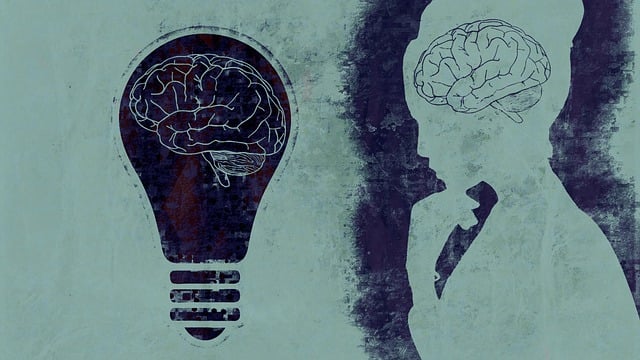Effective Littleton Obsessive Compulsive Disorder (OCD) therapy prioritizes risk assessment and harm minimization for client safety. Through comprehensive evaluations, therapists identify potential hazards like medication side effects, relapse, and emotional intensity. Personalized mitigation plans integrate evidence-based practices, cognitive-behavioral therapy (CBT), mindfulness, and social support to address individual challenges. Regular progress reviews, monitoring, and open communication ensure continuous risk management, fostering a holistic approach for improved treatment outcomes and enhanced well-being in diverse client groups.
In the realm of mental health, especially focusing on Littleton Obsessive Compulsive Disorder (OCD) therapy, risk assessment and harm minimization planning are paramount for safe and effective treatment. This comprehensive guide delves into understanding risk assessment as a foundational step for establishing secure therapy practices. We explore identifying potential harms associated with OCD treatment and present strategies for developing robust minimization plans. Subsequently, we discuss implementation and monitoring to safeguard client safety and well-being in Littleton OCD therapy settings.
- Understanding Risk Assessment: A Foundation for Safe Therapy Practices
- Identifying Potential Harms Associated with OCD Treatment
- Developing a Comprehensive Minimization Plan: Strategies and Interventions
- Implementing and Monitoring: Ensuring Client Safety and Well-being in Littleton OCD Therapy
Understanding Risk Assessment: A Foundation for Safe Therapy Practices

Understanding Risk assessment forms the bedrock upon which safe and effective therapy practices for conditions like Littleton Obsessive Compulsive Disorder (OCD) are built. It involves a meticulous evaluation of potential hazards and their likelihood, enabling therapists to create tailored plans that mitigate risks. This proactive approach ensures that individuals receiving treatment are not only protected from unforeseen harm but also benefit from a nurturing environment conducive to healing.
By integrating Trauma Support Services, Mental Health Education Programs Design, and Healthcare Provider Cultural Competency Training into risk assessment protocols, therapists can offer comprehensive care. Such an inclusive strategy recognizes the complex interplay between mental health issues, past traumatic experiences, and cultural nuances. This holistic perspective not only strengthens the effectiveness of treatment but also fosters trust and engagement among diverse client populations.
Identifying Potential Harms Associated with OCD Treatment

Identifying potential harms associated with OCD treatment is a critical step in any Littleton Obsessive Compulsive Disorder therapy program. While targeted interventions aim to alleviate symptoms, it’s essential to anticipate and mitigate risks. Common challenges include the potential for medication side effects, relapse during exposure therapy, and the emotional intensity that may arise as underlying beliefs and behaviors are challenged.
Effective harm minimization strategies in Littleton OCD Therapy involve integrating evidence-based practices such as stress management techniques, social skills training, and confidence boosting exercises. These complementary approaches not only enhance the therapeutic process but also equip individuals with valuable coping mechanisms to navigate potential setbacks and promote long-term recovery.
Developing a Comprehensive Minimization Plan: Strategies and Interventions

Developing a comprehensive harm minimization plan is a pivotal step in risk assessment for individuals dealing with conditions like Obsessive Compulsive Disorder (OCD). In the context of Littleton OCD therapy, this strategy involves a multi-faceted approach to mitigate potential risks and promote well-being. One key component is implementing specific interventions tailored to address the individual’s unique challenges. For instance, cognitive-behavioral therapy (CBT) techniques can help reframe negative thoughts and behaviors, thereby reducing compulsions and anxiety.
Additionally, self-esteem improvement strategies play a crucial role in harm minimization. Encouraging positive thinking and building resilience can empower individuals to cope with OCD’s impact on their daily lives. This may include mindfulness practices, relaxation techniques, and social support networks that foster a sense of belonging and reduce feelings of isolation. By integrating these interventions, the plan aims to prevent burnout, promote self-management, and enhance overall mental health, ensuring a more balanced and fulfilling life for those navigating OCD.
Implementing and Monitoring: Ensuring Client Safety and Well-being in Littleton OCD Therapy

Implementing and monitoring effective risk assessment strategies is paramount in Littleton Obsessive Compulsive Disorder (OCD) therapy to ensure client safety and well-being. Therapists play a crucial role in identifying potential hazards within the therapeutic process, including the emergence of severe symptoms or behavioral relapse. By conducting thorough initial assessments, therapists can anticipate and mitigate risks, tailoring treatment plans to meet individual needs. This involves regularly reviewing clients’ progress, monitoring their emotional states, and observing any changes in OCD manifestations.
A robust risk management approach goes beyond initial assessment. It includes implementing evidence-based interventions and burnout prevention strategies for healthcare providers, fostering an environment that promotes emotional well-being. Therapists should be equipped with Mental Health Policy Analysis and Advocacy skills to navigate systemic challenges, ensuring clients receive the support they need. Regular check-ins and open communication lines enable therapists to promptly address any concerns, preventing potential harm and enhancing overall therapy outcomes.
Risk assessment and harm minimization planning are essential components of providing safe and effective Littleton Obsessive Compulsive Disorder (OCD) therapy. By thoroughly understanding risk assessment, identifying potential harms specific to OCD treatment, and developing comprehensive minimization plans, therapists can ensure client safety and well-being. Implementing these strategies involves ongoing monitoring, allowing for prompt adjustments and interventions as needed. This proactive approach not only fosters a secure therapeutic environment but also enhances the overall success of Littleton OCD therapy.














